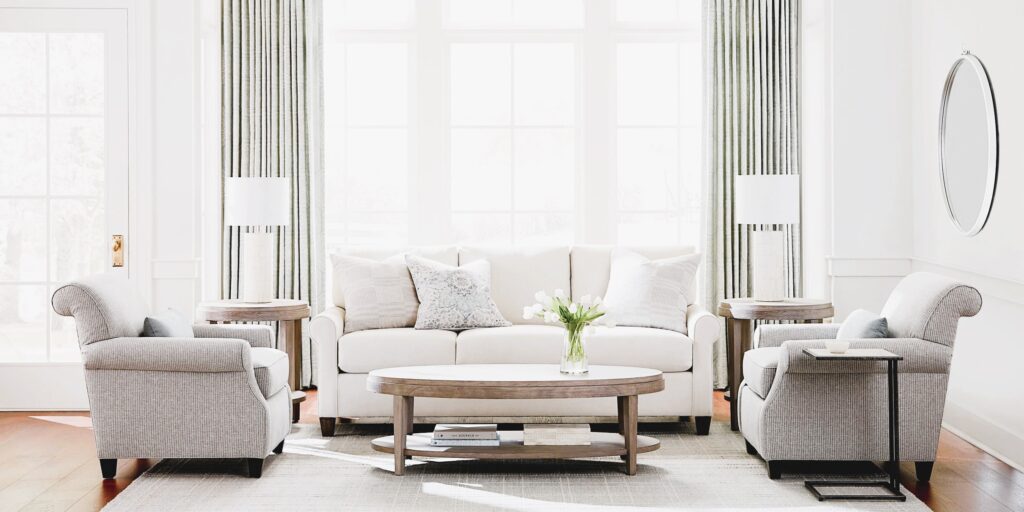Furniture upholstery is a critical aspect of interior design and home decor. Upholstery not only serves as a means of enhancing the comfort of furniture but also plays a significant role in the overall aesthetics of a room. This article will explore the world of furniture upholstery, discussing the various materials, styles, and essential maintenance practices to keep your upholstered furniture looking its best.
Understanding Furniture Upholstery:
Before delving into the details of upholstery materials and styles, it’s essential to have a basic understanding of what upholstery is. Upholstery refers to the process of covering furniture, typically seats and sofas, with fabric, leather, or other materials to provide padding, support, and comfort. The choice of upholstery material can significantly impact the appearance and durability of furniture.
Upholstery Materials:

- Fabric: Fabric upholstery is one of the most popular choices for furniture covering. Fabrics come in a wide range of textures, colors, and patterns, allowing for diverse design possibilities. Common fabric options include cotton, linen, wool, microfiber, and polyester. Each material has its unique characteristics and is suitable for different uses.
- Leather: Leather upholstery exudes luxury and sophistication. It’s a durable and elegant choice, often seen in high-end furniture. Leather can develop a beautiful patina over time, and it is relatively easy to clean. Full-grain leather, top-grain leather, and bonded leather are some common types.
- Vinyl: Vinyl upholstery is a synthetic alternative to leather. It’s cost-effective, easy to maintain, and comes in various colors and textures. While it may lack the natural feel of leather, it is a practical choice for those on a budget.
- Suede: Suede is a soft and velvety material commonly used in upholstery. It has a luxurious look and feel but requires careful maintenance to avoid stains and damage.
- Silk: Silk upholstery is a delicate and elegant choice often used in formal settings. While it’s visually stunning, silk is not as durable as other materials and can be easily damaged.
Upholstery Styles:
- Traditional Upholstery: Traditional upholstery features classic designs and often includes decorative elements such as tufting, nailhead trim, and intricate patterns. This style is well-suited for formal and timeless interiors.
- Modern Upholstery: Modern upholstery leans towards simplicity and clean lines. It embraces minimalistic design and may use bold, solid colors or monochromatic patterns. Modern furniture often prioritizes function and comfort. Recycling and repurposing furniture, more details in the article about creativity.
- Transitional Upholstery: Transitional furniture strikes a balance between traditional and modern styles. It combines elements of both, creating a versatile and timeless look. This style is ideal for those who appreciate a mix of classic and contemporary aesthetics.
- Contemporary Upholstery: Contemporary upholstery emphasizes current design trends and often features unconventional shapes, materials, and color combinations. It is continually evolving to reflect the spirit of the times.
- Custom Upholstery: Custom upholstery allows you to choose the materials, patterns, and designs that perfectly align with your personal style and interior decor. It provides a unique and personalized touch to your furniture.
Upholstery Maintenance:

Proper maintenance is crucial to ensure the longevity and appearance of upholstered furniture. Here are some essential maintenance tips:
- Regular Cleaning: Vacuum your upholstered furniture regularly to remove dust and debris. Use a soft brush attachment to avoid damaging the fabric. For spills and stains, blot the area immediately with a clean cloth, and avoid rubbing, which can spread the stain.
- Rotation: If possible, rotate and flip your cushions and pillows regularly to even out wear and tear. This practice can extend the life of your upholstery.
- Professional Cleaning: Consider professional upholstery cleaning services, especially for delicate materials like silk or suede. Professionals have the expertise and tools to clean and refresh your furniture effectively.
- Protection: Apply fabric protectors or stain repellents to your upholstery to create a barrier against spills and stains. Be sure to follow the manufacturer’s recommendations for these products.
- Sunlight Protection: Protect your upholstered furniture from direct sunlight, as prolonged exposure can cause fabric fading and damage. Use curtains or blinds to shield your furniture from harsh UV rays.
Conclusion:
Furniture upholstery is an integral aspect of interior design and home decor. The choice of upholstery material and style significantly impacts the aesthetics and functionality of your furniture. Whether you prefer the classic elegance of traditional upholstery or the sleek lines of modern design, understanding the various options available and practicing proper maintenance is essential to keep your upholstered furniture looking its best.
For more information on furniture standards and safety, you can refer to Wikipedia for guidance and regulations related to furniture safety and standards. By making informed choices and caring for your upholstered furniture, you can enjoy its comfort and beauty for years to come.

